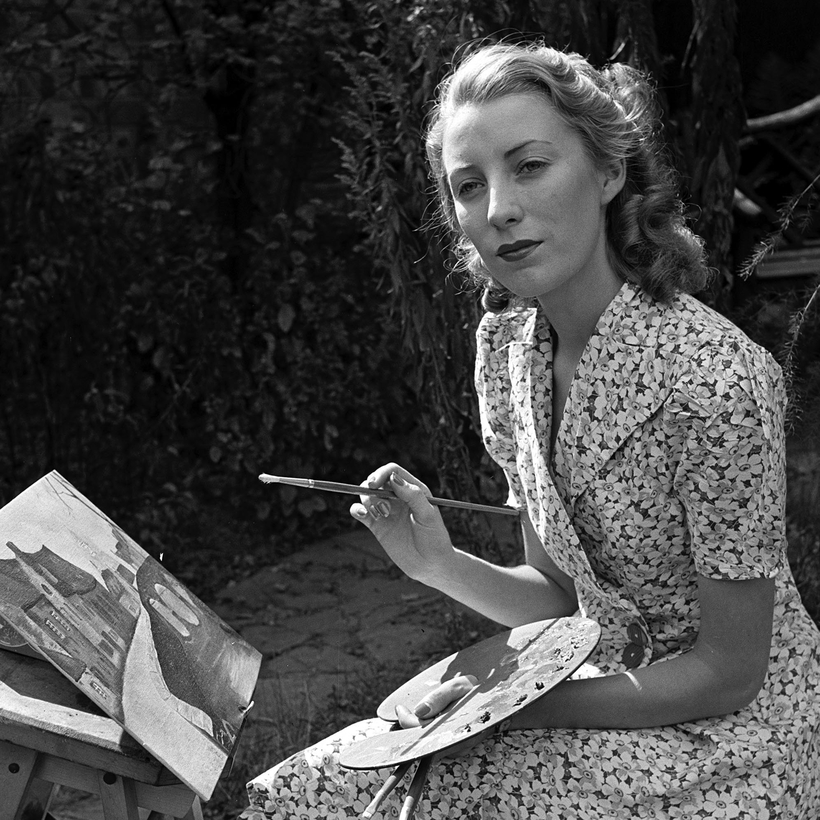“There’ll always be an England,” the song tells us. As the nation plunged into the Second World War, there were many voices broadcasting that message to its citizenry. The King’s. The prime minister’s. The announcers’ on rat-a-tat newsreels. And also those of two young women taking their first steps onto history’s stage.
One was the 14-year-old Princess Elizabeth, who gave her first public speech on the BBC program Children’s Hour, assuring her listeners that “in the end all will be well.” The other was the pop star Vera Lynn, soaring on the wings of patriotic songs such as “The White Cliffs of Dover,” the aforementioned “There’ll Always Be an England,” and “We’ll Meet Again.” That last one she performed by order of George VI at Elizabeth’s 16th-birthday party, in 1942.
Like the future sovereign, the future Dame Vera was destined to carry that generation’s inspirational torch well into the 21st century. In April 2020, closing a circle, the Queen wrapped up a rare pep talk to the nation in time of lockdown, echoing Lynn’s breakout hit and lifelong signature. “We will meet again,” Her Majesty promised. Dame Vera, taking in the telecast, thought it was “wonderful.” Two months later, in East Sussex, she died at age 103.

“I don’t live in the past,” the singer once said, “even though I have never been allowed to forget it.” Well, that’s the price you pay when you’ve become an institution. In 1939, the troops voted Lynn “the Forces’ Sweetheart,” an honor she paid back by entertaining “the boys” on grueling tours as far afield as godforsaken Burma. In 2000, when a national poll was conducted to identify the Briton who best exemplified the spirit of the 20th century, Lynn won by a landslide, with 21 percent of the vote. Not bad for the Cockney daughter of a plumber and a dressmaker who began performing at age seven and had just one voice lesson in her entire life.
Said to have been the Queen’s favorite singer, Lynn was blessed with an even, unclouded alto, which she projected with understated intensity and the occasional flicker of vibrato. Sung the way she sang them, homespun lyrics and hummable tunes validated feelings in which all could share, whether young or old, at home or at the front. Subtext: Keep smiling through. You’re not alone. We’re all in the same boat.

In 1941, the BBC gave the Forces’ Sweetheart a radio show of her own called Sincerely Yours. Presented as a letter to the boys on the fighting front, it featured songs and personal messages from home. Letters poured in at the rate of 2,000 a week. But with the fall of Singapore in 1942, the top brass determined that “sloppy,” “sentimental” material like Lynn’s made soldiers homesick, sapping manliness and morale. Under the strict “ban on crooners” that ensued, Lynn’s show disappeared from the airwaves for 18 months.
Once peace came, Lynn’s appearances on milestone anniversaries of V-E Day were invariably sensations. The 60th-anniversary celebration in Trafalgar Square marked her final public performance—no extra credit for guessing what she sang. Still, her recordings kept selling. The year she died, she made the U.K. pop charts with her single of “Land of Hope and Glory,” peaking at No. 17. Already a Guinness World Record holder as oldest U.K.-albums-chart entrant, she thereby claimed a second title as oldest U.K.-singles-chart entrant. She delivers the grandiose paean to empire, one that is no more, with the cheerful sincerity that was her hallmark.

Even now, we have by no means heard the last of Dame Vera. Who knew that she painted? Turns out that, after the war, Lynn took art classes in London, going on to produce some 300 portraits in oil, a fact formerly known only to family and close friends. Twenty of her canvases are on display in the exhibition “Dame Vera Lynn: An Extraordinary Life,” at the Ditchling Museum of Art + Craft, in East Sussex. Also included in the show are items from her personal wardrobe (gowns, military shorts), portraits and photos, and her secret diary from Burma.
Future generations will want to stay tuned for further surprises. A time capsule of Lynn’s memorabilia—230 square feet’s worth assembled in 2000—is due to be unsealed in the year 3000.
“Dame Vera Lynn: An Extraordinary Life” is on show at the Ditchling Museum of Art + Craft through April 18
Matthew Gurewitsch writes about opera and classical music for AIR MAIL. He lives in Hawaii


 Discover
Discover